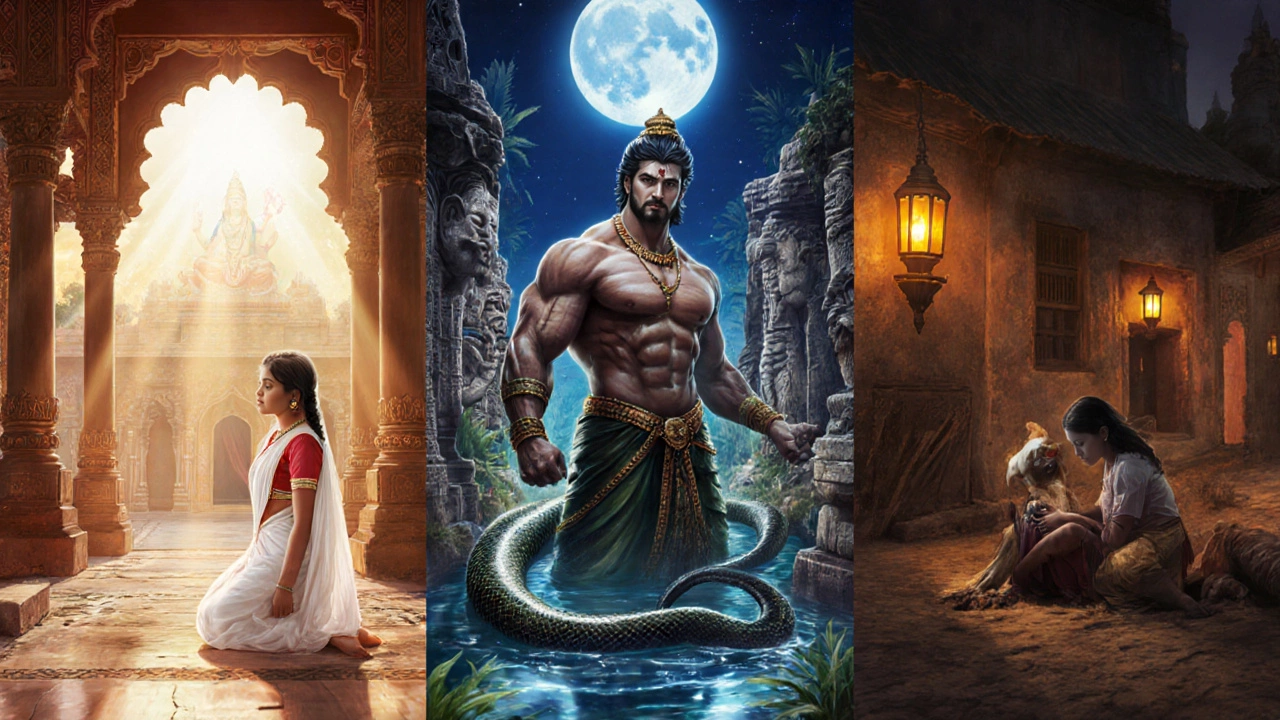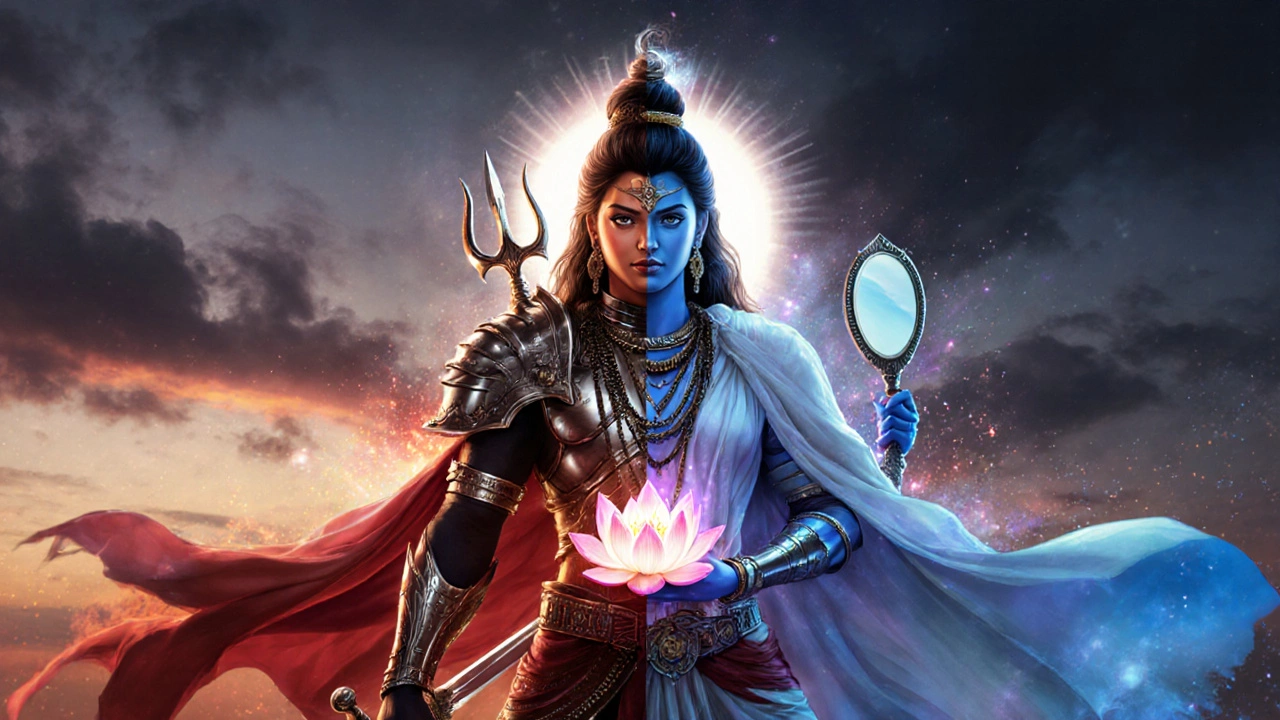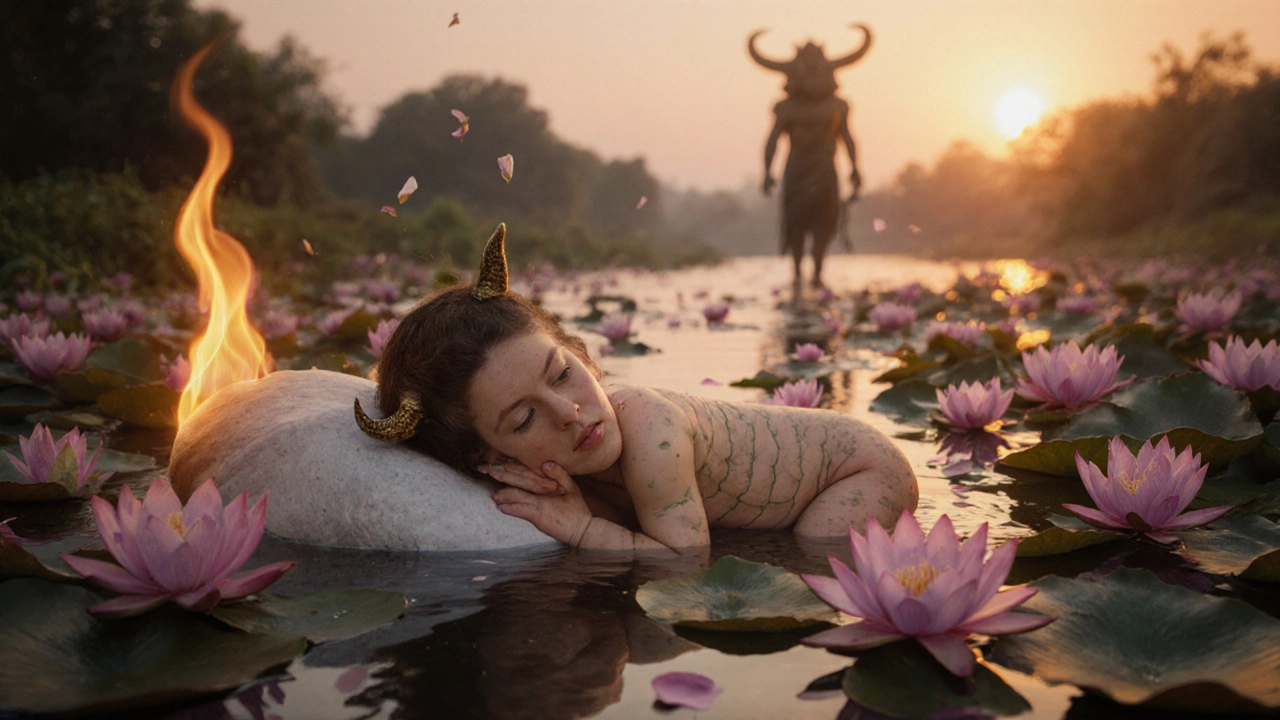Cambion Gender Generator
Discover how gender is assigned to cambion figures in Indian mythology based on three key factors. This tool analyzes patterns from ancient epics to modern interpretations to predict likely gender portrayals.
Gender Analysis
Ever wondered whether a cambion-half‑human, half‑demon-identifies as male or female in Indian myths? The answer isn’t a simple yes or no; it winds through ancient epics, regional folklore, and modern reinterpretations. Below we break down what a cambion actually is, how Indian mythology treats hybrid beings, and why gender often hinges on the story’s moral angle rather than biology.
What a Cambion Is
Cambion is a mythical hybrid offspring of a demon and a human-a concept that first appeared in medieval European lore but has been adopted by contemporary writers tapping into Indian mythic symbols. In the Indian context, the term is a handy shortcut for any creature born of a divine or demonic parent and a mortal mother, akin to the half‑demon heroes of the Mahabharata or the half‑serpent Naga legends.
Hybrid Beings in Indian Mythology
Indian stories are packed with hybrids: the mighty Asura who occasionally marries a Deva, the half‑human Rakshasa offspring like Vali and Sugriva, and the semi‑divine Naga who guard rivers and treasure. These beings don’t fit neatly into gender binaries; their identity often mirrors the role they play in a given narrative.
Why Gender Matters in Myths
Gender in Indian folklore isn’t just a biological label; it’s a cultural signal. Male hybrids usually embody raw power, aggression, or a challenge to cosmic order-think of the demon‑born Khandava fire‑bearer in the Mahabharata. Female hybrids, on the other hand, often symbolize temptation, cunning, or the bridging of worlds, as seen in the enchanting Apsara‑like daughter of the demon king Bhasmasura.

Classic Examples of Cambion‑Like Figures
cambion gender shows up in three well‑known stories:
- Mahishasura’s Daughter - In the Devi Mahatmya, Mahishasura, a shape‑shifting demon, briefly fathers a mortal child. The infant is raised as a girl named “Kavya,” who later becomes a devotee of the goddess Durga, illustrating how a hybrid can adopt a feminine, devotional role.
- Vasuki’s Half‑Human Son - The serpent king Vasuki mates with a human princess in a regional folk tale from Odisha. Their son, “Sudarshan,” is male, inherits his father’s venomous breath, and becomes a guardian of a sacred spring, reflecting the masculine protector archetype.
- Shaktri’s Demon‑Born Daughter - A 19th‑century Bengali novella portrays a scholar who falls for a demoness. Their daughter, “Anjali,” possesses both human empathy and demonic strength, and she ultimately helps resolve a village conflict, showcasing a nurturing yet powerful feminine figure.
How Different Sources Assign Gender
| Source | Assigned Gender | Reasoning in Text |
|---|---|---|
| Devi Mahatmya (ancient) | Female | Child raised by a goddess, emphasizes devotion |
| Regional Odisha Folktale (oral) | Male | Protector of water, mirrors father’s serpent nature |
| Bengali Novella (19th C) | Female | Combines empathy with strength, resolves conflict |
| Modern Fantasy Novel (2023) | Male | Heroic quest, aligns with classic half‑demon hero trope |
| Online Role‑Playing Game Lore (2022) | Both (player‑chosen) | Game mechanics let players pick gender, reflecting flexibility |
Key Factors That Influence Gender Depiction
When authors or storytellers decide a cambion’s gender, they usually consider three main factors:
- Parentage: If the demon father is a feared war‑god, the child often inherits masculine aggression. If the demon mother is portrayed as seductive, the child may be female.
- Plot Purpose: A cambion meant to challenge a hero’s masculinity will be male; one meant to test a heroine’s compassion will be female.
- Cultural Context: Modern Indian writers may subvert traditional gender roles, creating gender‑fluid or non‑binary hybrids to comment on contemporary issues.

Modern Reinterpretations and Gender Fluidity
In the last decade, Indian fantasy authors have begun to blur the binary. The 2021 bestseller “Shadows of the Ganga” introduces “Ravi,” a cambion who identifies as gender‑non‑binary, using both masculine and feminine pronouns interchangeably. The novel cites the ancient concept of Ardhanarishvara-the half‑male, half‑female deity-as a cultural precedent for fluid identities.
Practical Takeaways for Writers and Role‑Players
If you’re crafting a cambion character for a story, game, or script, keep these quick guidelines in mind:
- Decide the narrative function first-heroic challenger, compassionate healer, or moral foil.
- Choose parentage that logically supports the gender you need (e.g., demon mother for a seductive female).
- Consider regional folklore; a Bengal tale might favor a female hybrid, while a Rajasthani legend could lean male.
- Feel free to break tradition. Modern audiences appreciate subverting expectations, just as the Mahabharata once subverted caste norms.
- Use descriptive language that ties gender to abilities-strength for males, allure for females, duality for non‑binary.
Common Misconceptions About Cambion Gender
Many think a cambion must be male because demons are often depicted as masculine in Indian epics. In reality, the gender is a storytelling tool, not a fixed rule. Another myth is that cambions always possess evil traits; Indian folklore shows numerous hybrids who become saints, teachers, or guardians, regardless of gender.
Is the term “cambion” native to Indian mythology?
No. “Cambion” comes from medieval European folklore. Indian writers borrow the word to label hybrid beings that already exist in native stories, like the half‑demon heroes of the Mahabharata or the half‑serpent Naga.
Do Indian texts explicitly state the gender of hybrid offspring?
Ancient scriptures rarely use the modern word “cambion,” but they do describe the gender of specific half‑divine characters. For example, the daughter of Mahishasura in the Devi Mahatmya is clearly female.
Can a cambion be gender‑non‑binary in Indian storytelling?
Modern Indian authors increasingly explore gender fluidity, citing deities like Ardhanarishvara as mythic precedents. While classical texts don’t label characters as non‑binary, contemporary works do, reflecting today’s cultural dialogue.
What role does gender play in a cambion’s powers?
Gender often aligns with the narrative purpose: male hybrids are shown as warriors or protectors, while female hybrids may wield enchantment or diplomatic influence. However, writers can mix traits to craft unique characters.
How can I incorporate a cambion into a tabletop RPG set in India?
Start with the parentage: decide which demon (Asura) and which mortal (e.g., a village elder’s daughter) created the cambion. Choose a gender that matches the campaign’s theme, then give the character abilities that echo both lineages-like fire resistance from the Asura side and herbal knowledge from the human side.
